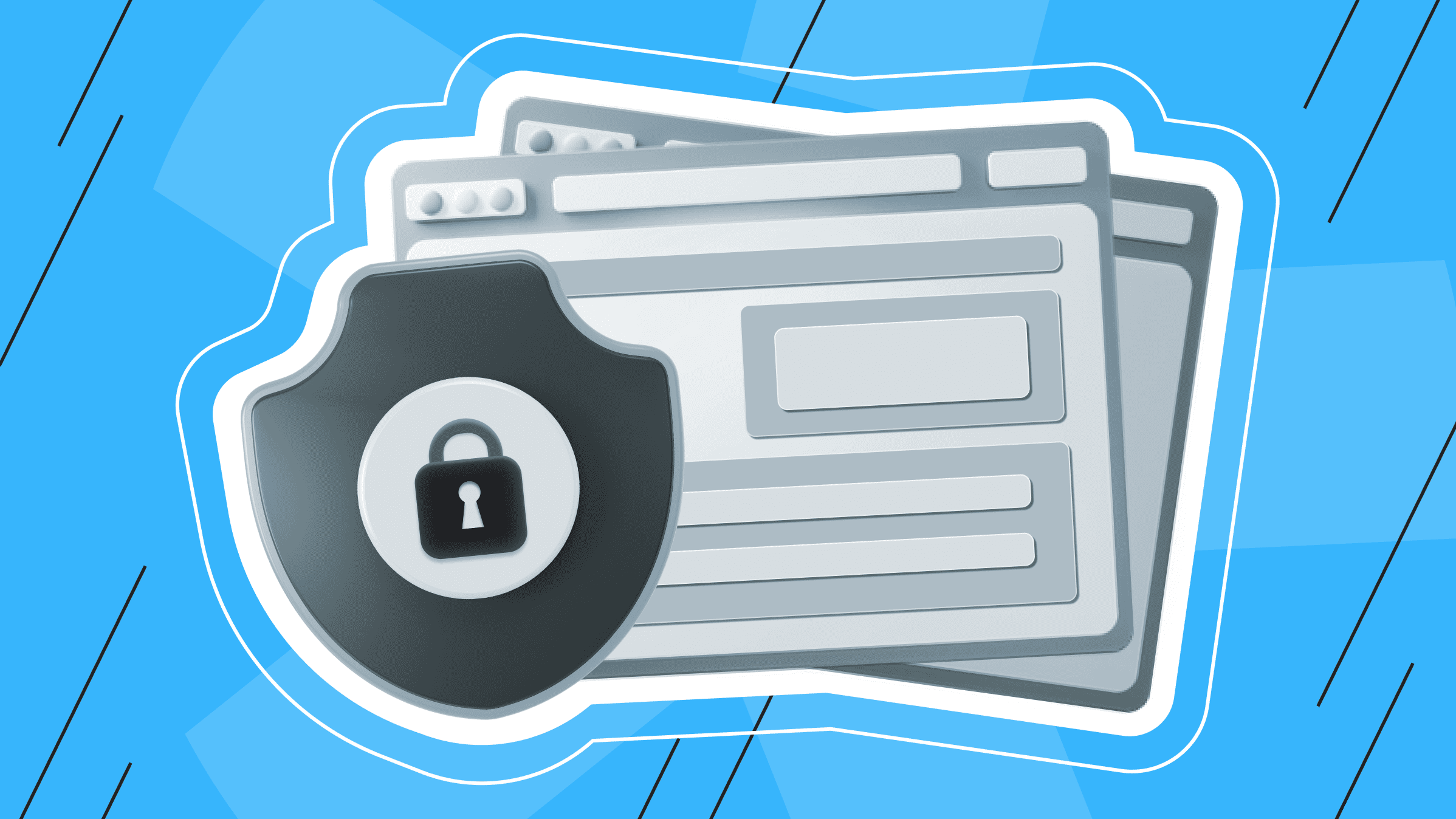
The layout and content of any good website is the result of great effort and resources. Firstly, this is a complex work of creating and filling it with various content: text, images, videos, etc. Copying and posting finished content from a website on a third-party resource can harm its reputation and ranking in search engines. Therefore, an important factor is protecting the site from copying. This article will discuss the methods for copying websites and measures to detect and prevent content theft.
Common Methods of Website Copying
Let’s answer two main questions that any Internet user asks when faced with the issue of copying websites:
Question № 1: Is it possible to copy a website?
You can copy any website online; however, what you get from this copying depends on the site's content. For example, you can download simple landing pages in a browser using the Ctrl+S command; online services and utilities such as Web2zip, Saveweb2zip, CopySite, Web ScrapBook, Httrack, Cyotek WebCopy, wget will also help. But if the site is filled with complex scripts, animations or other dynamic elements, you will most likely only receive its static frontend part and html code. To implement the dynamic backend part, you will still need the services of a programmer, programs for copying entire sites, correct layout, and further work with code in tools such as Sublime Text, Visual Studio Code, and Atom, for example.
Question № 2: Is it possible to copy a website from a legal point of view?
From a legal perspective, copying websites is not as easy as it may actually be. When creating and copying a website, it is crucial to consider legal aspects, and legal requirements and not abuse rights. The main legal aspects that must be observed when copying the site, its content, or information on it are:
- Avoiding copyright infringement.
- Using your own content or borrowed (with permission) content, licensed materials.
- Compliance with laws of personal data protection and implementation of security measures to prevent their leakage.
- Compliance with the rules for using the site.
- Compliance with patent and other intellectual rights of third parties.
- Following privacy laws.
Conclusion:
When copying websites, there are risks both for the owners of these sites and for those who try to bypass the recommended legal aspects when trying to copy a site. Therefore, question № 3 arises: Is it worth copying the site in principle? A fine, even for one episode of legal violation, can equal the cost of full legal registration on such a site.
Technical Measures to Prevent Website from Copying

As we mentioned earlier, an essential factor is the knowledge and ability to protect the site from copying. Knowing the standard methods of copying websites makes it easier to think about measures to prevent copying. In the following sections, we will talk about basic technical measures to prevent copying.
Disabling Right-click Functionality
The most common method of protecting a site from unwanted copying of site content is to disable the right-click feature on your website. Copying text on the website is prohibited using CSS, HTML, and JavaScript properties. By disabling this feature, you disable the Ctrl+C combination and the ability to call up the context menu by right-clicking to copy text. This can be done in several ways:
Method № 1: Use the Disable Right Mouse Click module.
To use Disable Right Mouse Click, follow these steps:
- Download the module to your computer using the link provided.
- In your site's admin panel, go to Modules > Manage Modules.
- Click +.
- In the window that appears, click Download and select the archive file.
- Click Download and Install.
- The Disable Right Mouse Click module is installed.
Right-clicking will be disabled immediately after installing and running the module.
Method № 2: Use a Wordpress plugin.
By using functional WordPress add-ons, you can improve the performance of your website. From a technical point of view, embedding . php into the general layout of the site, you improve its functionality.
To disable right-click functionality on your website using a Wordpress plugin, follow these steps:
- Create a Wordpress plugin using the instructions.
- Run the wp footer hook (one of the main hooks, without which many plugins will not work).
- Add this code:
if (typeof target.onselectstart!="undefined")
target.onselectstart=function(){return false}
else if (typeof target.style.MozUserSelect!="undefined")
target.style.MozUserSelect="none"
else
target.onmousedown=function(){return false}
target.style.cursor = "default"
}
window.onload = function () {
document.body.onselectstart = function () {
return false;
}
document.body.ondragstart = function () {
return false;
}
}
Then activate your blog or website and right-click should be disabled.
Also, this plugin for images without a right click may also help you disable the ability to copy images.
WP Content Copy Protection and No Right Click, in addition to disabling right click, allows you to disable Ctrl+A, Ctrl+C, Ctrl+X, Ctrl+S or Ctrl+V (and equivalent commands on MacOS), and even disable the ability to highlight text. This means you can protect your images and texts.
Many experienced users consider these plugins useless because disabling the JavaScript on which the scripts are based in the browser renders them meaningless.
Also, blocking the right mouse button can sometimes even harm your site's reputation rather than protect it, because the chances of new external links are sharply reduced: you will not be cited because you will have to rewrite the text manually. In addition, thieves will still be able to circumvent this prohibition. As for your images, they are perfectly protected by adding a watermark.
Adding Watermarks to Images

Adding a watermark is another way to protect sensitive and used internal pages of your website in the event of a violation, such as storing or printing pages of the site without the knowledge and permission of its owner.
Adding a watermark occurs by applying an inscription or logo to an image, page, or document. By adding it to audio, video, or graphic documents, we add a hidden copyright notice, hiding information in digital media data to protect or authenticate the content.
Digital watermarking technology is classified into:
- Visible watermarks on images.
The visible watermarking technique is mainly used on image media. You can use Photoshop or other graphic and video editors to do this.
For media such as digital documents, in current conditions, this technique is still minimal.
- Watermarks on web pages.
The easiest way to add watermarks to web pages is to combine HTML, CSS, and JavaScript code. Here's a CSS code snippet that you can use to create a watermark effect on web pages:
.watermark {
position: fixed;
top: 50%; /* Adjust as needed */
left: 50%; /* Adjust as needed */
transform: translate(-50%, -50%);
font-size: 36px; /* Adjust font size */
color: rgba(0, 0, 0, 0.1); /* Adjust opacity and color */
pointer-events: none; /* Ensure the watermark doesn't interfere with user interaction */
z-index: 9999; /* Ensure the watermark stays on top */
/* Additional styling properties can be added here such as font-family, font-weight, etc. */
}
You can apply this CSS class .watermark to any element you want to serve as the watermark. For instance, if you want to add the watermark to the entire page, you can wrap the content in a <div> and apply the class to it:
<body>
<!-- Your website content goes here -->
<div class="watermark">Your Watermark Text</div>
<h1>Welcome to My Website</h1>
<p>This is some sample content.</p>
</body>
Here, the watermark text consists of one word and will be duplicated many times to fill the site page. After merging, the watermark text is filled in.
You can also use JavaScript code to prevent text from being highlighted.
Using JavaScript to Prevent Selection of Text

There are several ways to cancel a selection:
- Cancel mousedown/selectstart:
Double-clicking here will display "Test", without highlighting
</div>
Canceling mousedown/selectstart disables selection in the browser when a specific element is clicked but does not cancel the selection altogether. Accordingly, selection is possible if you hold the mouse button down next to this element and hover the mouse over this element or the desired selection area.
- Canceling a selection after the fact using the clearSelection() function
<li ondblclick="clearSelection()">The selection is cleared when double-clicked.</li>
</ul>
<script>
function clearSelection() {
if (window.getSelection) {
window.getSelection().removeAllRanges();
} else { // старый IE
document.selection.empty();
}
}
</script>
This method helps to deselect by double-clicking already selected text but still involves selecting using the mouse button held down as in the previous method.
- Overridden by the user-select CSS property.
<style>
b {
-webkit-user-select: none;
/* user-select -- is a non-standard property */
-moz-user-select: none;
/* that's why we need prefixes */
-ms-user-select: none;
}
</style>
Line up..
<div ondblclick="alert('Тест')">
<b>This text cannot be selected (except IE9-)</b>
</div>
.. Line after
From the code, it follows
Line up..
This text cannot be selected (except IE9-)
.. Line after
This non-standard CSS property disables element selection and is defined (prefixed) everywhere except IE9-.
- Cancel with unselectable="on" attribute.
This text is unselectable in IE, <em>except for child elements</em>
</div>
In IE9 there is no CSS user-select property, but there is an attribute called unselectable. It follows from the code that the non-selectable part is where the unselectable attribute is.
Which code to use and with which attributes depends on the tasks, the specific case and the nature of content protection, such as whether you need to deselect text or select and copy.
Adding a Copyright Notice
As we mentioned earlier, a website owner spends a lot of time and financial resources filling a website with content. Text is considered a vulnerable type of content, as it is most often copied. It is unlikely that it will be possible to protect the text completely, but you can use digital depositing in n’RIS. This procedure fixes the copyright of the text (from 1 year to 5 years with the possibility of extension), sending the text to a digital cell in the final or intermediate version. The content of the site is deposited in an electronic file with a fixed date and time and is protected by blockchain technology. This electronic file may contain screenshots, texts, logos, videos, design style, etc., confirming the copyright ownership of the site content.
Protecting Unique Content
The simplest but most armor-piercing way to protect the content of your website is uniqueness. If a description of, say, your company or product is created using generic, faceless phrases, then it could very well be copied and used to describe any other company. The more specific and unique your content, the lower the likelihood and desire for it to be stolen and rewritten because it's easier to write your own.
Filing a DMCA Takedown or Violation Claim

What do you do if you suspect or prove that your content has been stolen?
If there is a suspicion that your copyright has been violated, you can start by filing a complaint with Google yourself using a special application form. In more serious situations, such as apparent theft of your content, documenting the copied content may be worth documenting and filing a claim for takedown or DMCA (Digital Millennium Copyright Act) violation. This notice to remove or restrict access to content based on suspected legal infringement is called a “takedown notice.” True, sites that violate rights can be removed using a “takedown notice” from services and search engines registered only in the United States. Using DMCA as a way to protect content has many advantages:
- Prompt and effective response to network violations.
- Protection of the rights of any copyright holder, regardless of the domain zone of the site, citizenship, or place of residence of the applicant.
Employing CAPTCHA to Deter Bots
As information technology has advanced, the development and use of bots have become widespread.
Bots are programs that quickly perform automated tasks. Despite the usefulness and assistance of “helper bots” in quickly processing requests and tasks, “pest bots” can threaten security and privacy, steal information, and launch cyberattacks. Understanding the nature of such threats helps in combating them. One effective way to deter bots is to use CAPTCHA.
A CAPTCHA is a security measure (test) to prevent automated bots from performing certain operations on a website or application. To detect bots, CAPTCHA offers a task in the form of recognizing a picture, sound, or solving a mathematical problem, thereby weeding out bots that find it difficult to solve it. IP blocking comes next, which prevents bots and can help keep them from reaching websites from known botners or untrusted locations.
Monitoring and Detecting Website Copying

Another effective way to protect your intellectual property rights is to use copy-detection technology and copy-monitoring strategies.
To detect duplicates of your content, you can use search engines, anti-plagiarism services and various software that compare your content (part of the content) in a database with millions of other options.
If your content was nevertheless borrowed by attackers, you can easily identify this fact by using services that offer automatic and constant scanning of the Internet for copying of your content. In addition, after identifying plagiarism, they can help you recover copyright.
The copy monitoring strategy includes:
- Conducting educational events providing information about the negative consequences of copying and copyright infringement.
- Using technical means and systems for copy detection and control.
For companies:
- Developing a policy for working without unauthorized copying.
- Providing feedback and rewards for those who comply with the policy and do not infringe copyright.
- Interaction and development with partners of joint approaches to copy control.
Educating Users about Copyright
In conclusion, we would like to add that, as is known, ignorance of the laws does not exempt us from responsibility. Besides technical measures to prevent copying and protect the site, educating users about copyright laws and the importance of respecting intellectual property is important. It can also be helpful to place prominent notices on your website reminding users of your copyright policy. Perhaps these helpful notices will stop attackers in their tracks by reminding them of responsibility and help the uninformed audience avoid inadvertent violations and further litigation.
VPS for Website
Virtual private servers - efficient operation for your website at a favorable price. Fast NVMe, more than 30 countries, managed and unmanaged VPS.
Dedicated Server
Smooth operation, high performance, and user-friendly setup - it's all there for your websites.
From $70.00/mo Limited time discount

